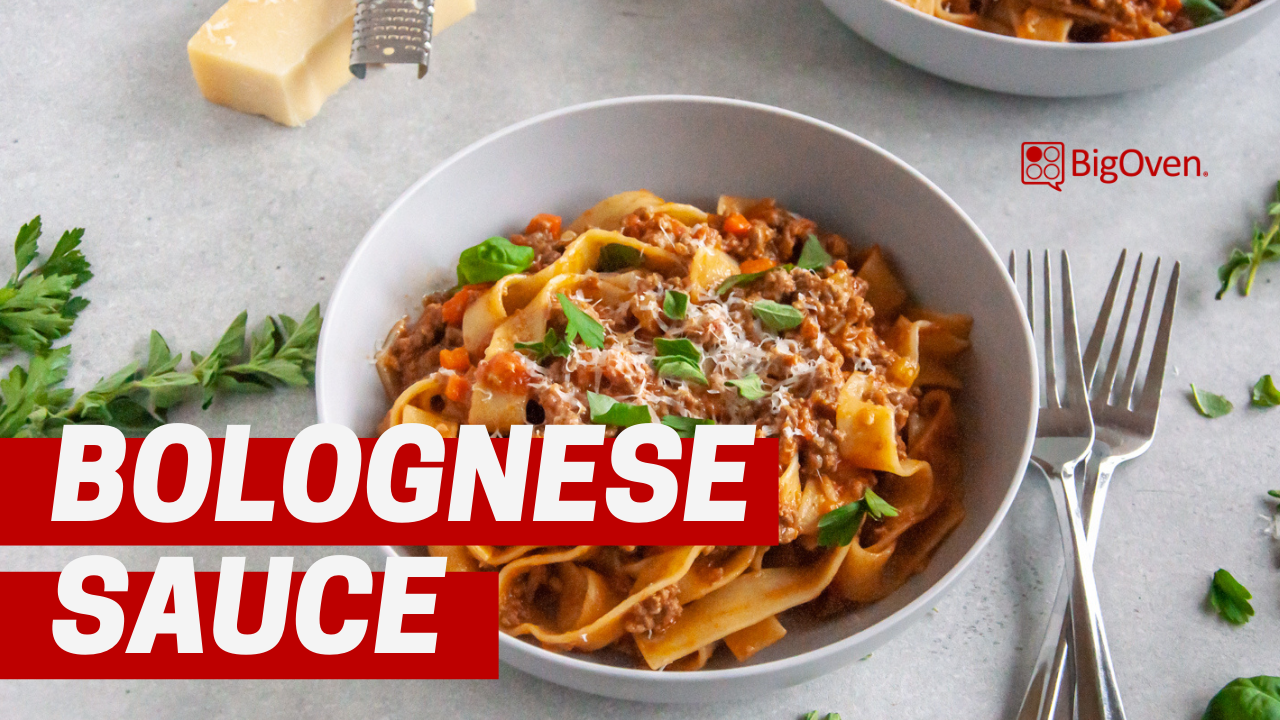BigOven Timing Tips
Cooking and baking are arts…hence the term “culinary arts.” Like many artistic pursuits, keeping a close watch on the progress of the endeavor is a natural inclination. After all, you don’t want cookies with burnt bottoms, soggy pasta, or dried-out chicken or fish. But like most creative tasks, there are times when leaving food alone produces the best results, so you have to know when to “step away from the stove.”
Sautéing and Frying
Although these are two of the most popular ways to cook meat, poultry, and fish, they are the most often improperly executed. When you see celebrity chefs preheating their skillets before adding oil, there’s a good reason for it, not just a dramatic flourish. Heating oil in a cold pan makes things stick to the bottom of the skillet or sauté pan, even if you heat it thoroughly before adding the food. Set the pan on the burner and let it get hot while you cut or bread the food, add the oil, and let it heat for another 1 to 2 minutes before proceeding. If the cooking instructions specify a non-stick or cast-iron skillet, there’s usually a reason, so follow them. Once you place the food into the hot oil, leave it alone to let it form a good crust on the bottom before turning it. Moving it around or trying to turn it prematurely results in soft exteriors and broken pieces of food. Ideally, fried or sautéed fillets of meat, poultry, and fish should be turned only once when it’s cooked halfway through.
Try our BigOven Original Recipe here: Chicken & Waffles

Sauces and Gravies
Nothing strikes fear in the hearts of many cooks like making sauces and gravies, yet they are two of the simplest recipes ever. Sauces typically start with oil or butter bases, while gravies rely on pan drippings for their flavor, but both require first making a roux. Roux is nothing more than a mixture of flour and fat but it’s essential to give sauce or gravy body. You may have heard the expression, “Cook until the flour is done,” which is confusing but simply means cooking the roux until the flour loses its “floury” taste. Letting it bubble over low heat for a few minutes gives it a nutty, rich flavor that results in delicious sauces and gravies. Roux is conventionally cooked until very light brown for cream sauces to keep them white and to a deeper shade for brown sauces and gravies. Darker colored roux has more flavor.
Adding liquid is the next step that makes cooks anxious. Warming the liquid before whisking it into the roux makes it blend better and prohibits lumps. Add the liquid in a slow, steady stream while you whisk it into the roux with your other hand. When the mixture is smooth, reduce the heat and keep stirring to prevent sticking while it thickens. Remember that sauces and gravies thicken as they cool, so don’t thicken them too much over the heat. If they get too thick, whisk in a little water, broth, or milk and gently reheat right before serving.
Try our BigOven Original Recipe here: Bolognese Sauce

Pasta, Rice, and Dumplings
Tips for cooking perfect pasta include some crazy antics such as throwing it against the wall and declaring it done when it sticks to the wall surface but all you really need is a timer you trust and the ability to follow package instructions. If the cooking time has a range such as 8 to 10 minutes, opt for the middle range. Bring your large pot of water to a rolling boil, add salt (this is essential for pasta; adding salt later doesn’t flavor the pasta all the way through), cook it for 9 minutes, stirring only once or twice, and immediately drain it. Rinsing it under cold water will halt the cooking process but it also washes away taste and nutrients.
Cooking flawless rice confounded people for so long that appliances called rice cookers were invented. To make great rice on the stovetop, use twice as much water as rice and add salt. For a cup of rice and 2 cups of water, about a teaspoon of salt is perfect. Pour the rice into the pan first, add the salt, and then the water. Do not stir, as that will make the rice starchy. Place a tight-fitting lid on the pan, bring it to a boil over high heat, and immediately reduce the heat to low—not medium-low or medium. Walk away and don’t lift the lid or move the pot for 15 minutes. Turn off the heat and let the rice rest on the burner for 5 to 10 minutes before serving.
Dumplings really put your patience to a test. For chicken and dumplings, bring the broth to a slow simmer and add big spoonfuls of the dumpling mixture on top of the liquid in a single layer. Immediately place a tight-fitting lid on top and walk away. Cook the dumplings for however long the recipe specifies, usually between 15 and 20 minutes. Do not under any circumstances lift the lid. Doing so lets the vital steam escape from the pan and you’ll end up with doughy dumplings instead of light, fluffy ones.
Try our BigOven Original Recipe here: Quick Rotisserie Chicken & Dumplings

Baking
Once you place items in the oven, don’t open the door, as that can instantly reduce the temperature by up to 75 degrees. Drastic drops in temperatures frequently make breads and cakes collapse and turn out cookies that are done on the bottom but not cooked through. If you must turn cookies sheets halfway through baking, do so as quickly as possible for minimal heat loss.
Try our BigOven Original Recipe here: Baked Cake Donuts

Do you have timing tips to share? We’d like to hear about them.





